Evidently, the light at the end of the tunnel the Steelers were seeing following last Sunday's win over the Raiders turned out to be an oncoming train. Call it, the Houston Texans Express.
The Steelers arrived at NRG Stadium on Sunday with a two-game winning streak and the appearance of being a team on the rise after showing incremental improvement in every phase of their performance over the course of the two weeks following a loss to San Francisco in the regular season opener on Sept. 10.
But any and all of that feel-good was extinguished by a Texans team that ran the football effectively and protected their rookie quarterback behind an offensive line that had to be pieced together because of injuries, and then used their defense to do the kinds of things the Steelers expected to do with their own defense but could not. Add it all up and what resulted was a 30-6 defeat that was as complete as the score indicated.
Leading up to kickoff, the seemingly insurmountable advantage the Steelers owned came in the matchup pitting their ability to create pressure with their defensive front – primarily from T.J. Watt and Alex Highsmith – vs. a Houston offensive line crippled by injuries to significant players. Starting left tackle Laremy Tunsil was out; Josh Jones, the starting left guard and the primary backup at both tackle spots, was out. The starting center, Jarrett Patterson, was going to be a rookie sixth-round pick, because two other centers (Scott Quessenberry and Juice Scruggs) were on the injured reserve list, as was tackle Tytus Howard, who had started 46 games for the Texans over the previous three seasons.
And so when the Steelers won the coin toss, it made perfect sense when they elected to defer, because that would put Houston's apparent weakness on the field in front of rookie quarterback C.J. Stroud vs. a defensive front that arrived ranked third in the NFL in sacks per pass attempt through the first three weeks of the season.
While that seemed like a solid plan, it failed miserably, because during a game-opening 69-yard drive for a touchdown the Texans rushed for 41 of those yards and faced only one third down among the 12 plays they needed to travel the distance to take a 7-0 lead.
"From an agenda standpoint, we didn't do a lot of the things that we desired to do," said Coach Mike Tomlin. "We didn't stop a lot of the things that we thought that they desired to do – and thus the outcome. We deferred in an effort to get ourselves off to a fast start potentially, and I thought they did a nice job of establishing tempo and they ran the ball on us. We've got to be better vs. the run."
And the offense has got to be better, period, in any and every category.
On the Steelers opening offensive possession of the game, which followed that first Texans touchdown, Kenny Pickett converted the first two third-down situations with his legs – the first on a scramble and the second on a sneak. But what followed was an 8-yard loss on a sack of Pickett in which defensive end Jerry Hughes came in untouched and then a pass deep down the middle for Calvin Austin III that might have been a touch underthrown and consequently was intercepted by former Steelers cornerback Steven Nelson.
Houston took advantage of the takeaway with a 9-play, 29-yard drive for a field goal and a 10-0 lead, and in keeping with the frustrating theme of the afternoon, 22 of those 29 yards came via the run.
Then from that point until the end of a first half where the Texans added two more field goals to increase their lead to 16-0, the Steelers offense punted four straight times, and included in that were their 13th and 14th three-and-outs of the young season. The offense's longest gain of the half was 9 yards, and it did not run a single play in Houston territory.
"There is nothing going on with that Pittsburgh offense right now," said CBS analyst and former Steelers Coach Bill Cowher at halftime of the broadcast. "I'll tell you, Pittsburgh's in trouble."
Cowher is a Hall of Fame coach, and besides those credentials it was impossible to dispute his analysis had you watched what was unfolding during the first half. The offense has been unable to do anything consistently right to this point in the season, with the most frustrating aspect being the failure to build on or even sustain various spurts of productivity from one week to the next.
Take the top three receiving threats. In Las Vegas, George Pickens averaged 18.8 yards a catch, and Calvin Austin III (72-yards) and Pat Freiermuth (13 yards) both caught touchdown passes. The following week vs. a Texans secondary that wasn't appreciably better, Pickens and Austin were targeted a combined 12 times and finished with an 8.1 average on the 6 passes they caught, and Freiermuth caught 3 passes for 7 yards and left the game with an injured hamstring.
"We had these spurts where we look good, and we're not doing it soon enough in games," said center Mason Cole. "We're not functioning efficiently. I think we're waiting on splash plays, and we don't get them, we're not converting third downs. It's just inefficient, bad ball."
Game action photos from the Steelers' Week 4 game against the Houston Texans at NRG Stadium
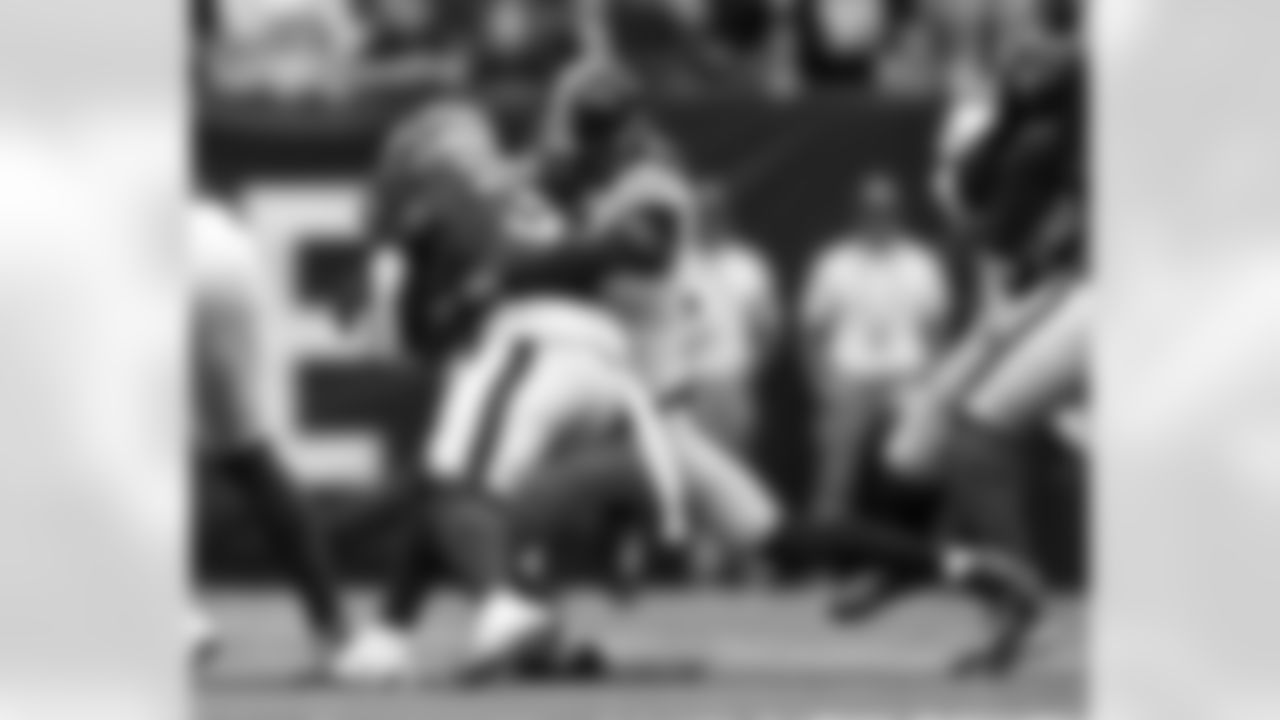
Pittsburgh Steelers cornerback Chandon Sullivan (34) during a regular season game between the Pittsburgh Steelers and the Houston Texans, Sunday, Oct. 1, 2023 in Houston, TX. (Karl Roser / Pittsburgh Steelers)

Pittsburgh Steelers linebacker T.J. Watt (90) during a regular season game between the Pittsburgh Steelers and the Houston Texans, Sunday, Oct. 1, 2023 in Houston, TX. (Karl Roser / Pittsburgh Steelers)
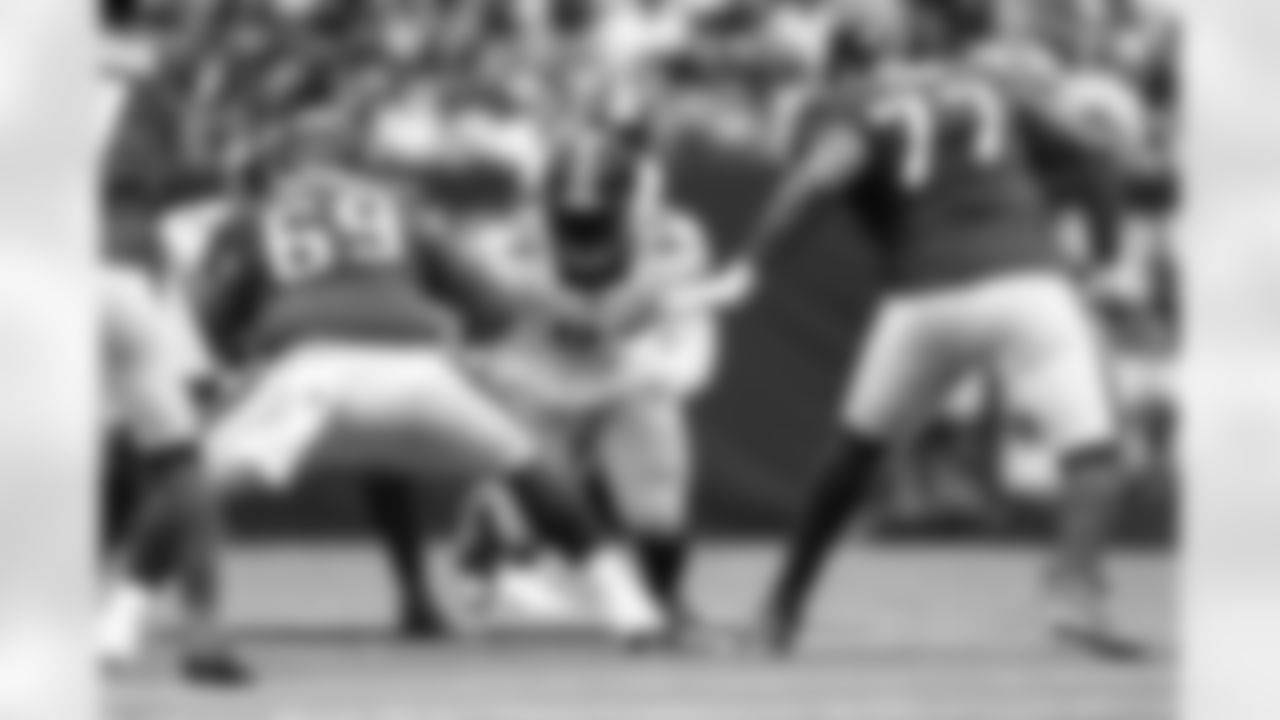
Pittsburgh Steelers defensive tackle Larry Ogunjobi (99) during a regular season game between the Pittsburgh Steelers and the Houston Texans, Sunday, Oct. 1, 2023 in Houston, TX. (Karl Roser / Pittsburgh Steelers)
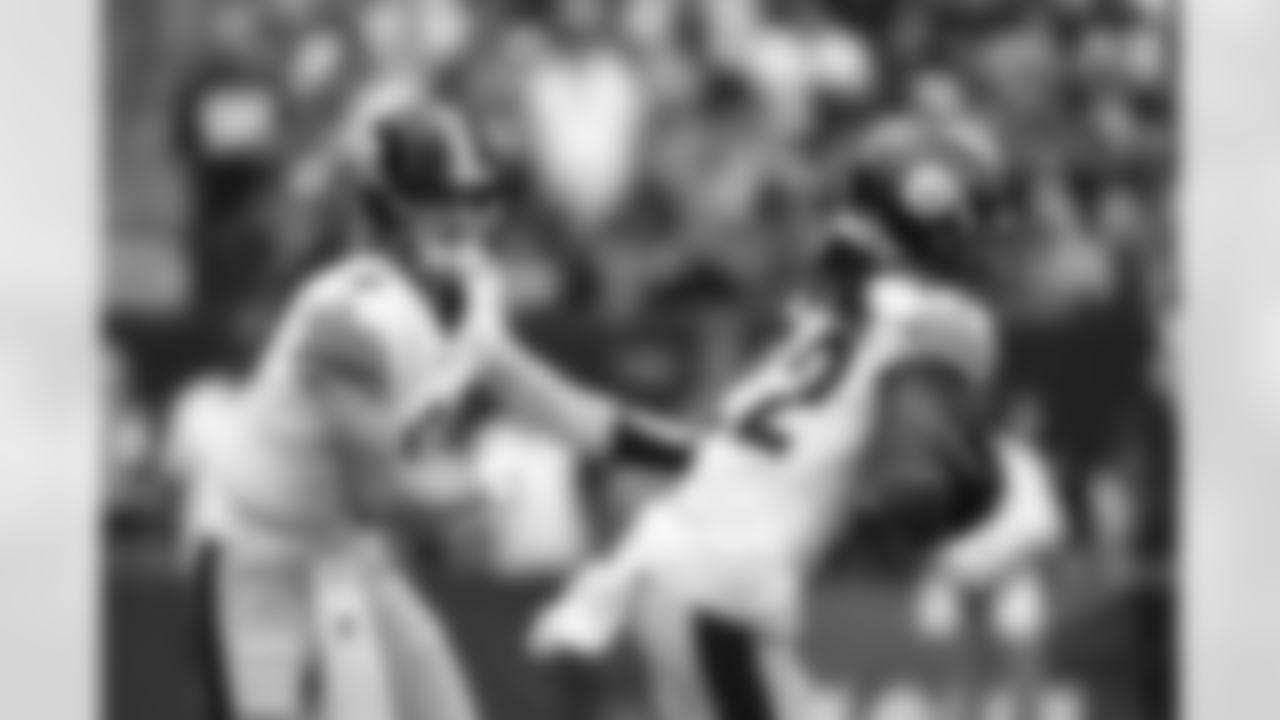
Pittsburgh Steelers quarterback Kenny Pickett (8) and Pittsburgh Steelers running back Najee Harris (22) during a regular season game between the Pittsburgh Steelers and the Houston Texans, Sunday, Oct. 1, 2023 in Houston, TX. (Karl Roser / Pittsburgh Steelers)

Fans during a regular season game between the Pittsburgh Steelers and the Houston Texans, Sunday, Oct. 1, 2023 in Houston, TX. (Karl Roser / Pittsburgh Steelers)

Pittsburgh Steelers linebacker T.J. Watt (90) during a regular season game between the Pittsburgh Steelers and the Houston Texans, Sunday, Oct. 1, 2023 in Houston, TX. (Karl Roser / Pittsburgh Steelers)

Pittsburgh Steelers quarterback Kenny Pickett (8) during a regular season game between the Pittsburgh Steelers and the Houston Texans, Sunday, Oct. 1, 2023 in Houston, TX. (Karl Roser / Pittsburgh Steelers)
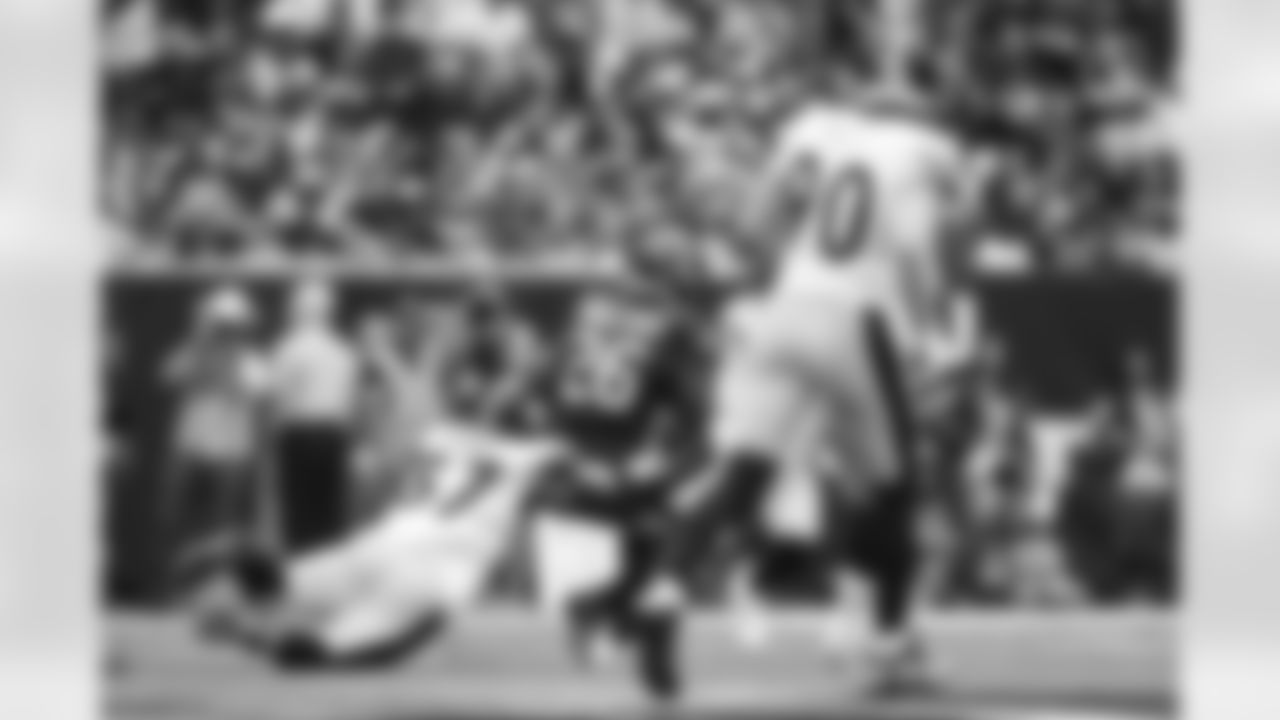
Pittsburgh Steelers defensive tackle Montravius Adams (57) during a regular season game between the Pittsburgh Steelers and the Houston Texans, Sunday, Oct. 1, 2023 in Houston, TX. (Karl Roser / Pittsburgh Steelers)

Pittsburgh Steelers wide receiver Allen Robinson II (11) during a regular season game between the Pittsburgh Steelers and the Houston Texans, Sunday, Oct. 1, 2023 in Houston, TX. (Karl Roser / Pittsburgh Steelers)
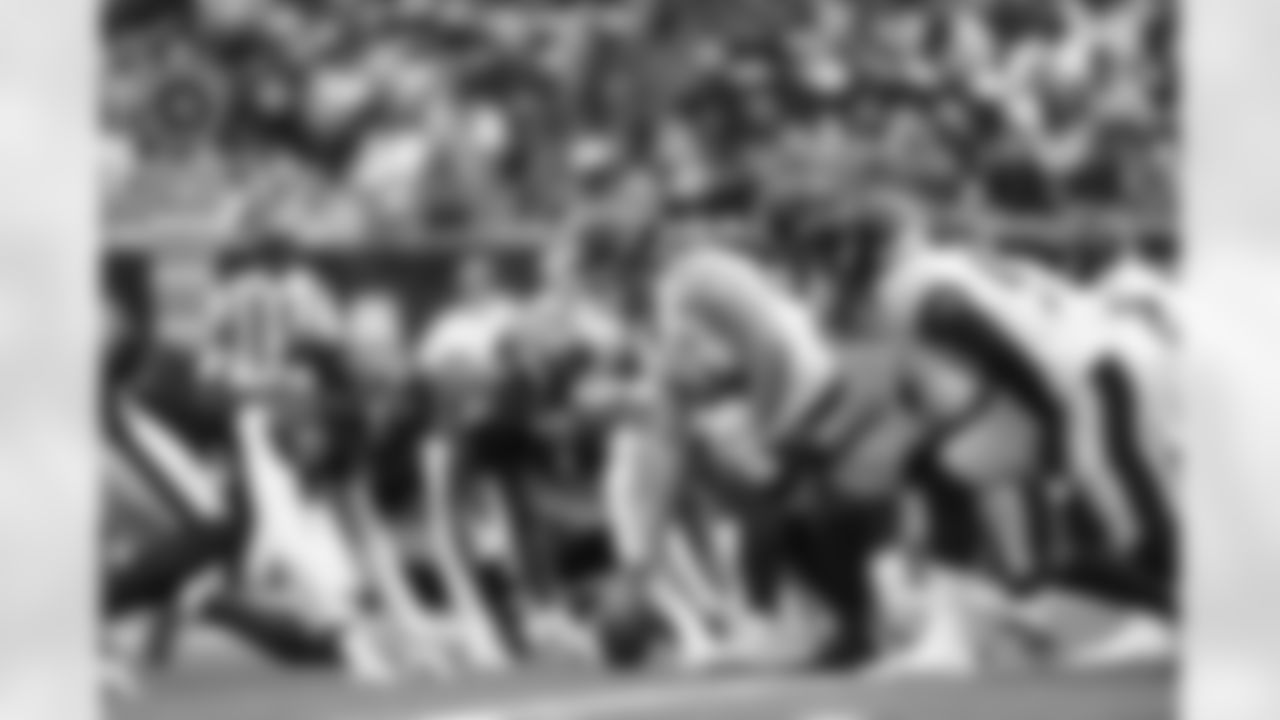
Pittsburgh Steelers long snapper Christian Kuntz (46) during a regular season game between the Pittsburgh Steelers and the Houston Texans, Sunday, Oct. 1, 2023 in Houston, TX. (Karl Roser / Pittsburgh Steelers)

Pittsburgh Steelers quarterback Kenny Pickett (8) during a regular season game between the Pittsburgh Steelers and the Houston Texans, Sunday, Oct. 1, 2023 in Houston, TX. (Karl Roser / Pittsburgh Steelers)

Pittsburgh Steelers running back Najee Harris (22) during a regular season game between the Pittsburgh Steelers and the Houston Texans, Sunday, Oct. 1, 2023 in Houston, TX. (Karl Roser / Pittsburgh Steelers)
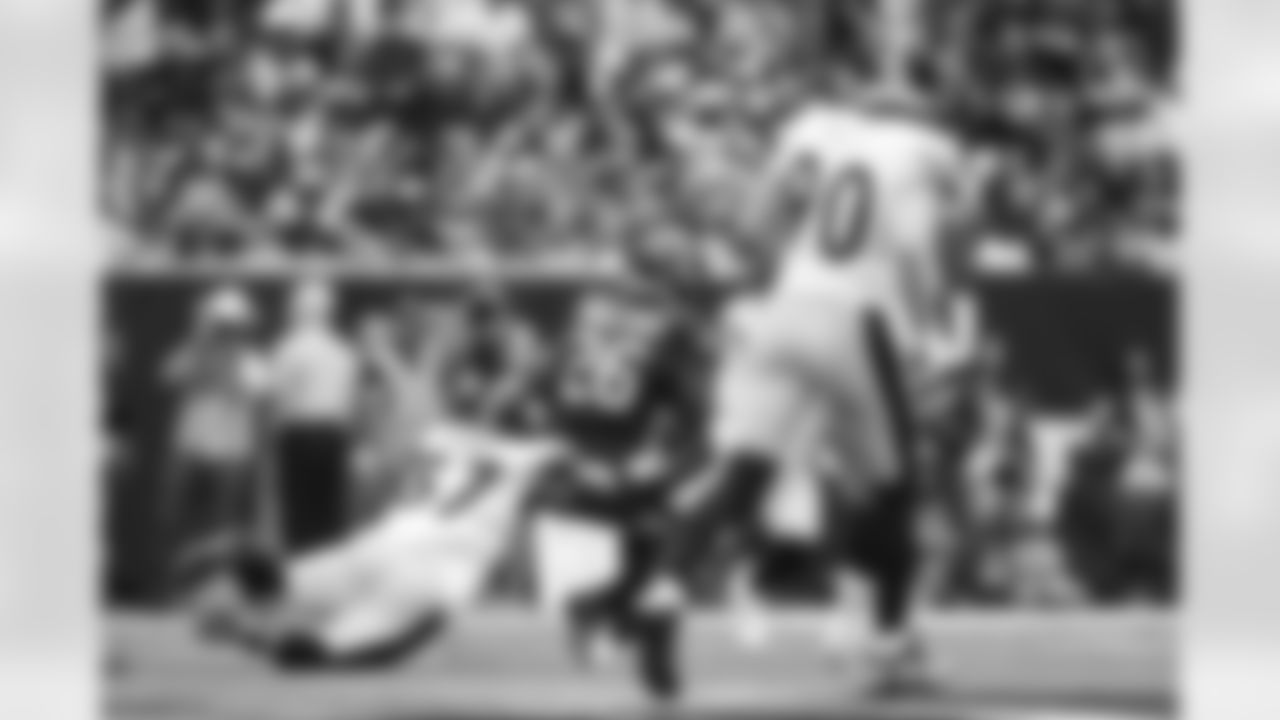
Pittsburgh Steelers defensive tackle Montravius Adams (57) during a regular season game between the Pittsburgh Steelers and the Houston Texans, Sunday, Oct. 1, 2023 in Houston, TX. (Karl Roser / Pittsburgh Steelers)
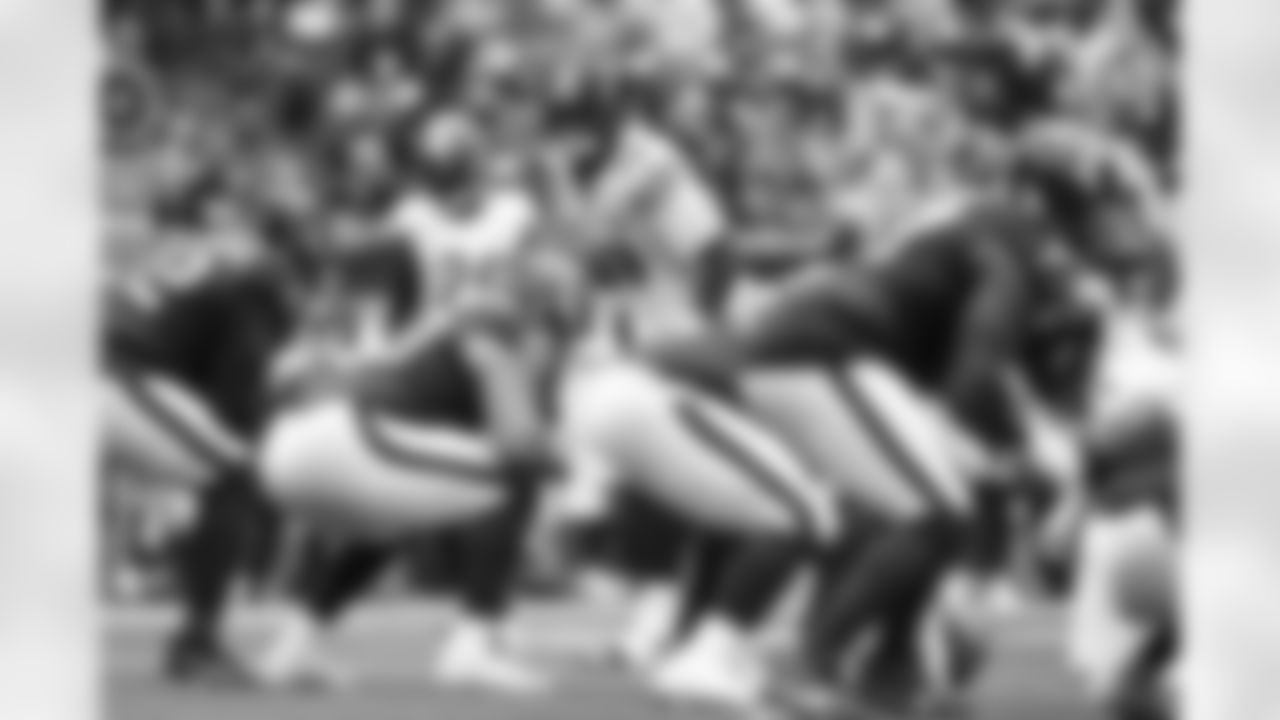
Pittsburgh Steelers defensive end DeMarvin Leal (98) during a regular season game between the Pittsburgh Steelers and the Houston Texans, Sunday, Oct. 1, 2023 in Houston, TX. (Karl Roser / Pittsburgh Steelers)

Pittsburgh Steelers linebacker T.J. Watt (90) during a regular season game between the Pittsburgh Steelers and the Houston Texans, Sunday, Oct. 1, 2023 in Houston, TX. (Karl Roser / Pittsburgh Steelers)

Pittsburgh Steelers running back Najee Harris (22) during a regular season game between the Pittsburgh Steelers and the Houston Texans, Sunday, Oct. 1, 2023 in Houston, TX. (Karl Roser / Pittsburgh Steelers)
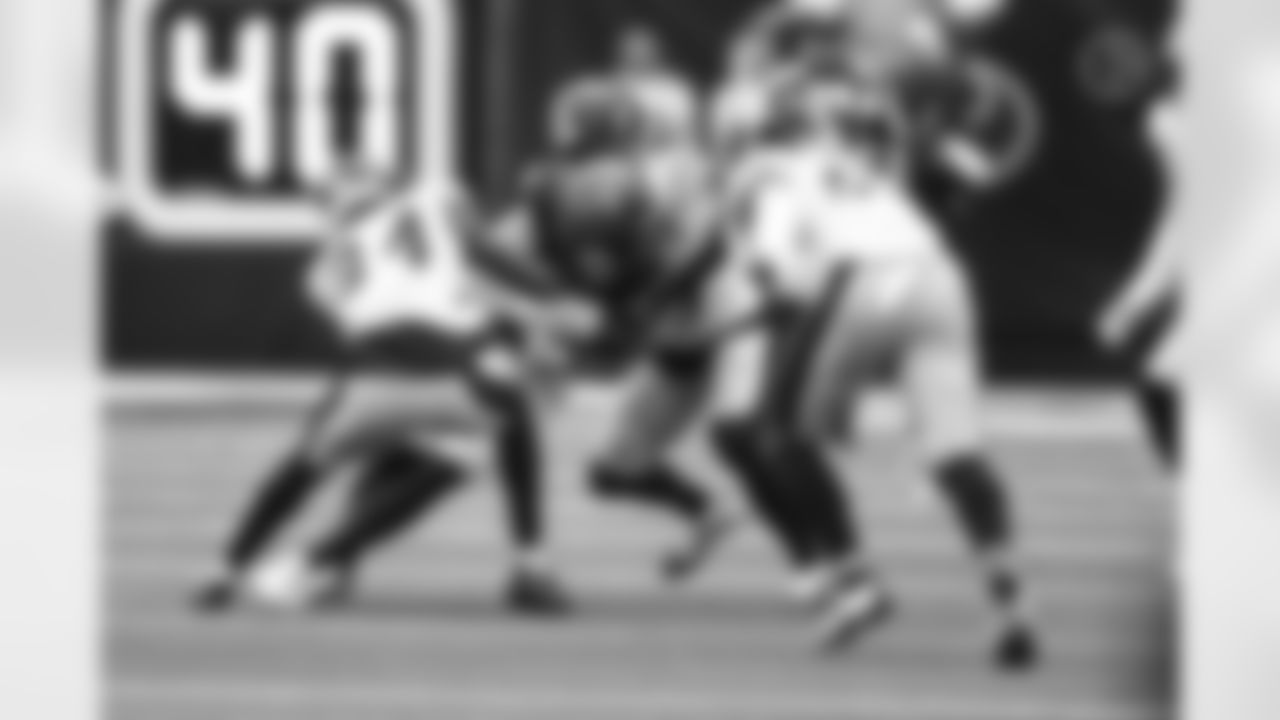
Pittsburgh Steelers cornerback Chandon Sullivan (34) and Pittsburgh Steelers safety Minkah Fitzpatrick (39) during a regular season game between the Pittsburgh Steelers and the Houston Texans, Sunday, Oct. 1, 2023 in Houston, TX. (Karl Roser / Pittsburgh Steelers)
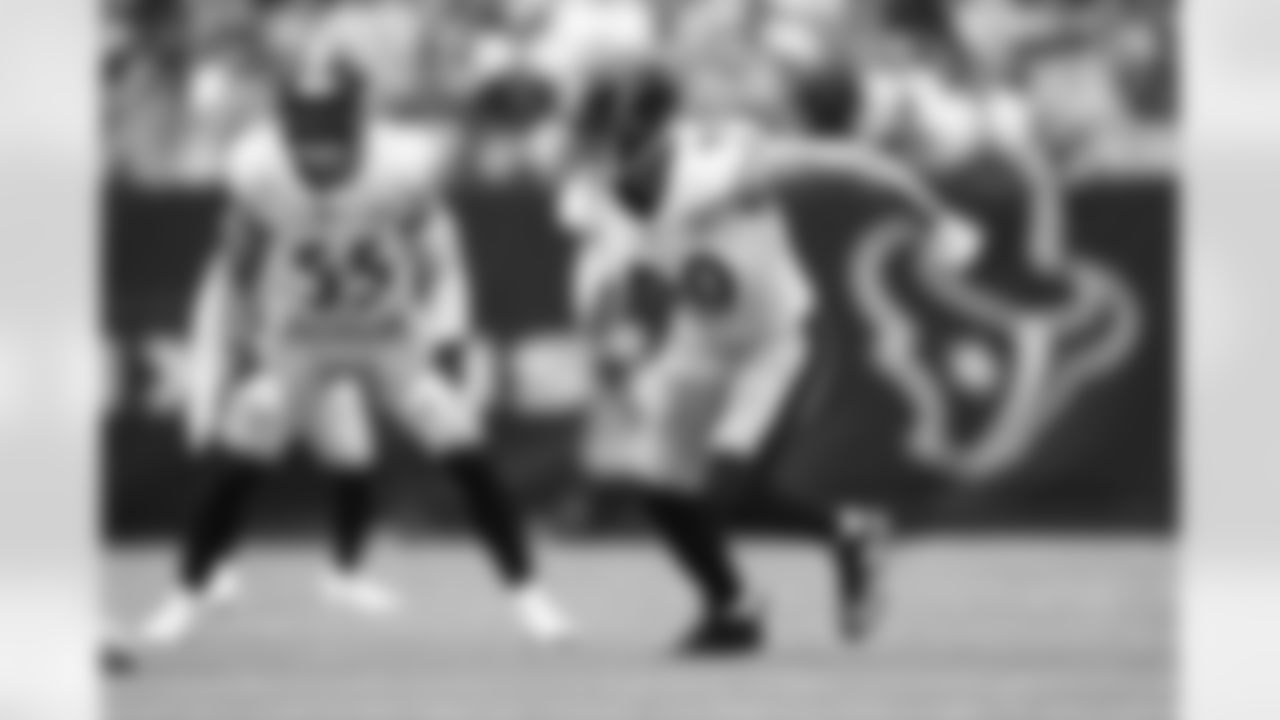
Pittsburgh Steelers linebacker T.J. Watt (90) during a regular season game between the Pittsburgh Steelers and the Houston Texans, Sunday, Oct. 1, 2023 in Houston, TX. (Karl Roser / Pittsburgh Steelers)
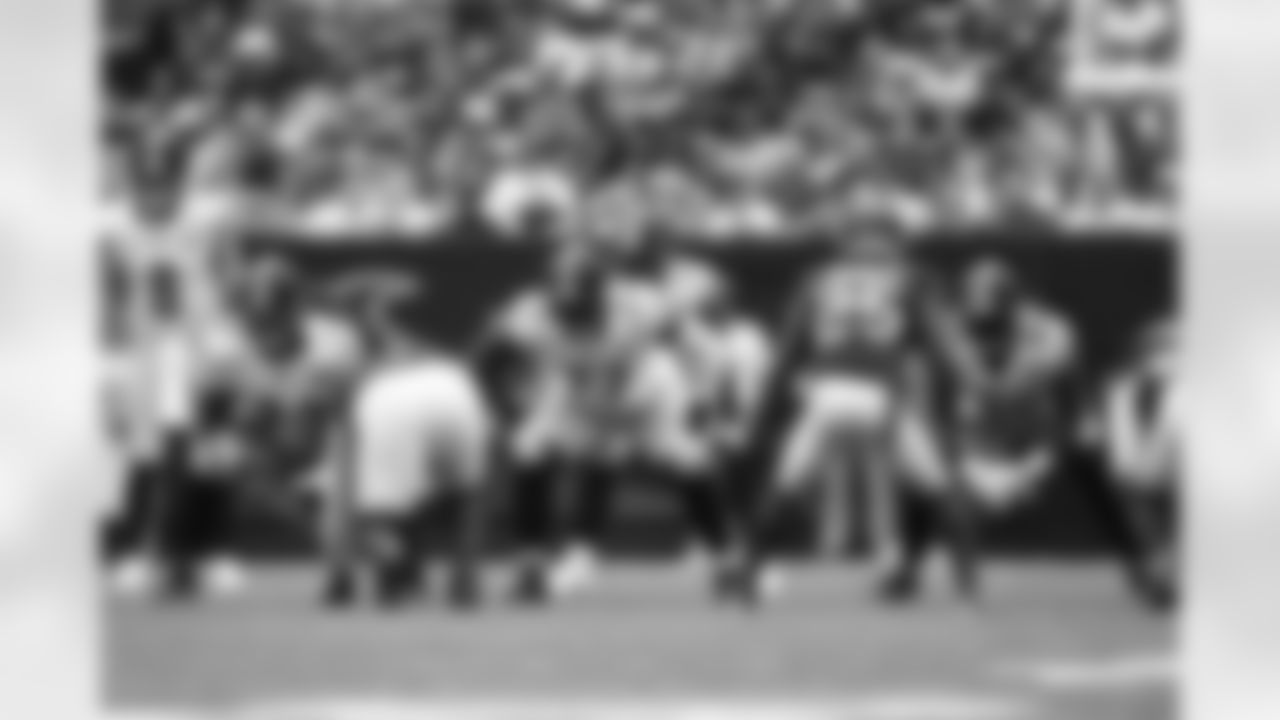
Pittsburgh Steelers offensive tackle Broderick Jones (77) during a regular season game between the Pittsburgh Steelers and the Houston Texans, Sunday, Oct. 1, 2023 in Houston, TX. (Karl Roser / Pittsburgh Steelers)
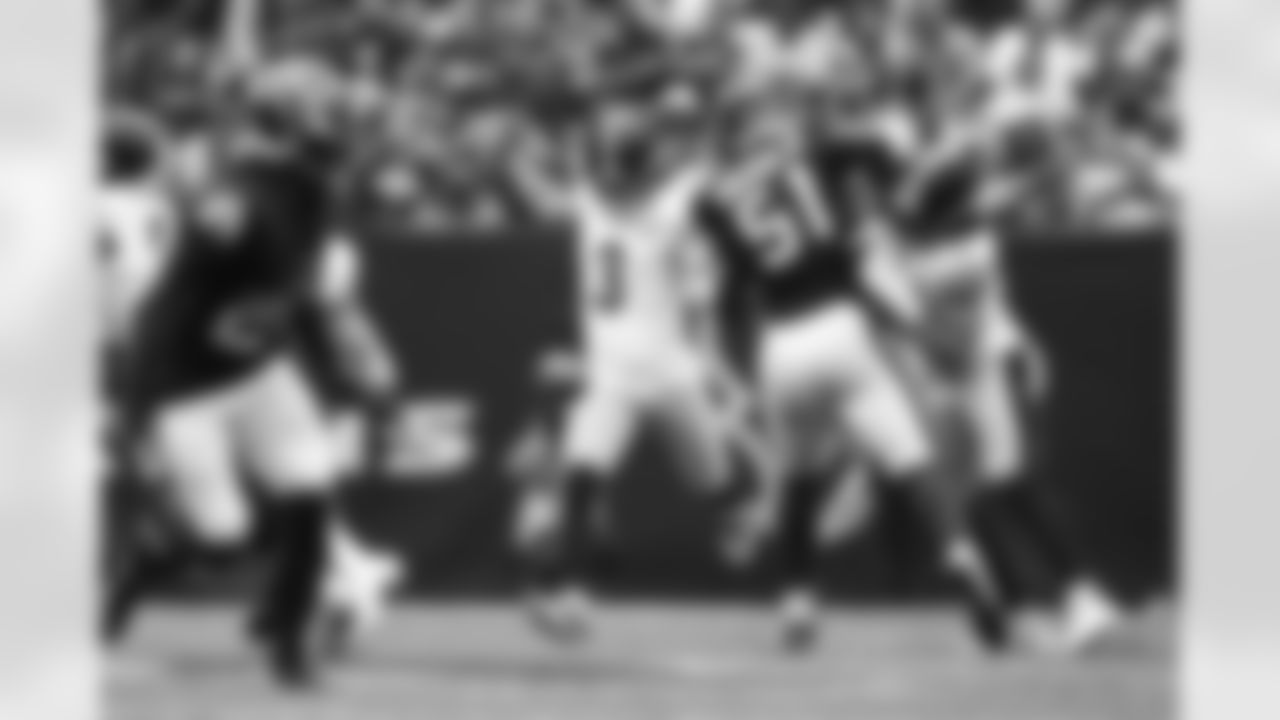
Pittsburgh Steelers punter Brad Wing (3) during a regular season game between the Pittsburgh Steelers and the Houston Texans, Sunday, Oct. 1, 2023 in Houston, TX. (Karl Roser / Pittsburgh Steelers)

Pittsburgh Steelers defensive lineman Keeanu Benton (95) during a regular season game between the Pittsburgh Steelers and the Houston Texans, Sunday, Oct. 1, 2023 in Houston, TX. (Karl Roser / Pittsburgh Steelers)
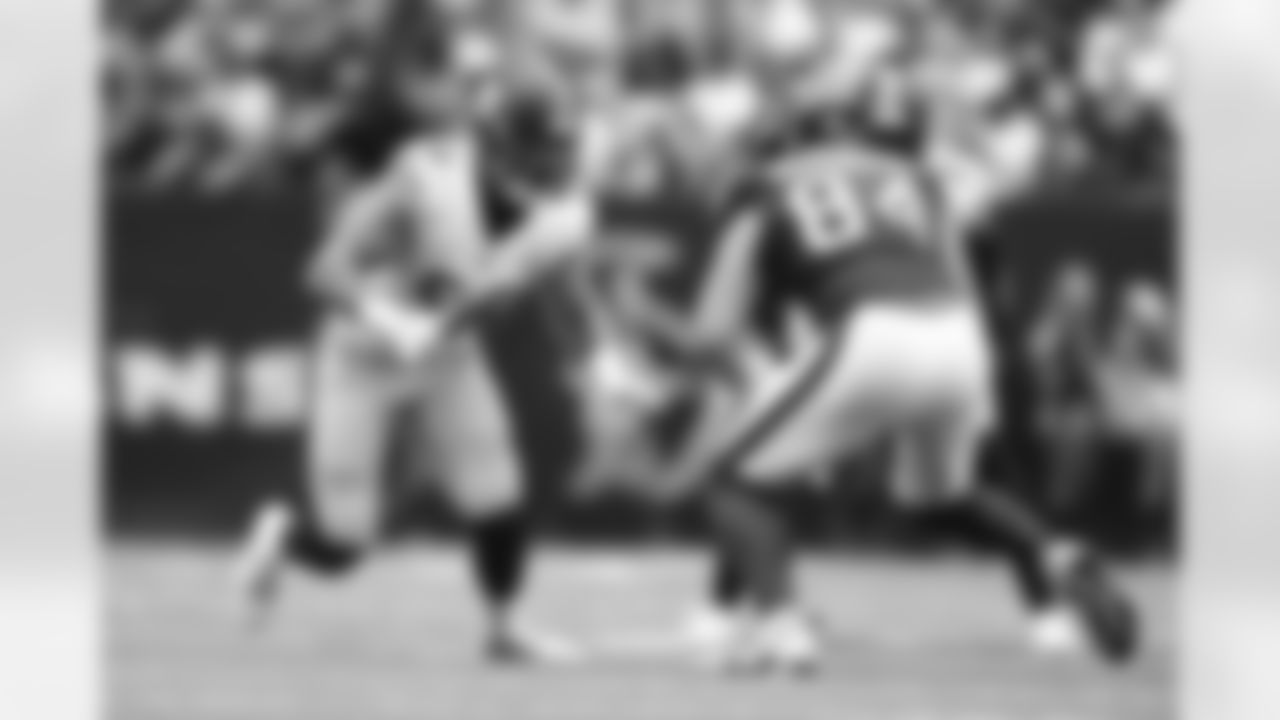
Pittsburgh Steelers linebacker Alex Highsmith (56) during a regular season game between the Pittsburgh Steelers and the Houston Texans, Sunday, Oct. 1, 2023 in Houston, TX. (Karl Roser / Pittsburgh Steelers)

Pittsburgh Steelers quarterback Kenny Pickett (8) during a regular season game between the Pittsburgh Steelers and the Houston Texans, Sunday, Oct. 1, 2023 in Houston, TX. (Karl Roser / Pittsburgh Steelers)

Pittsburgh Steelers safety Damontae Kazee (23) during a regular season game between the Pittsburgh Steelers and the Houston Texans, Sunday, Oct. 1, 2023 in Houston, TX. (Karl Roser / Pittsburgh Steelers)

Pittsburgh Steelers running back Jaylen Warren (30) during a regular season game between the Pittsburgh Steelers and the Houston Texans, Sunday, Oct. 1, 2023 in Houston, TX. (Karl Roser / Pittsburgh Steelers)

Pittsburgh Steelers punter Brad Wing (3) and Pittsburgh Steelers kicker Chris Boswell (9) during a regular season game between the Pittsburgh Steelers and the Houston Texans, Sunday, Oct. 1, 2023 in Houston, TX. (Karl Roser / Pittsburgh Steelers)
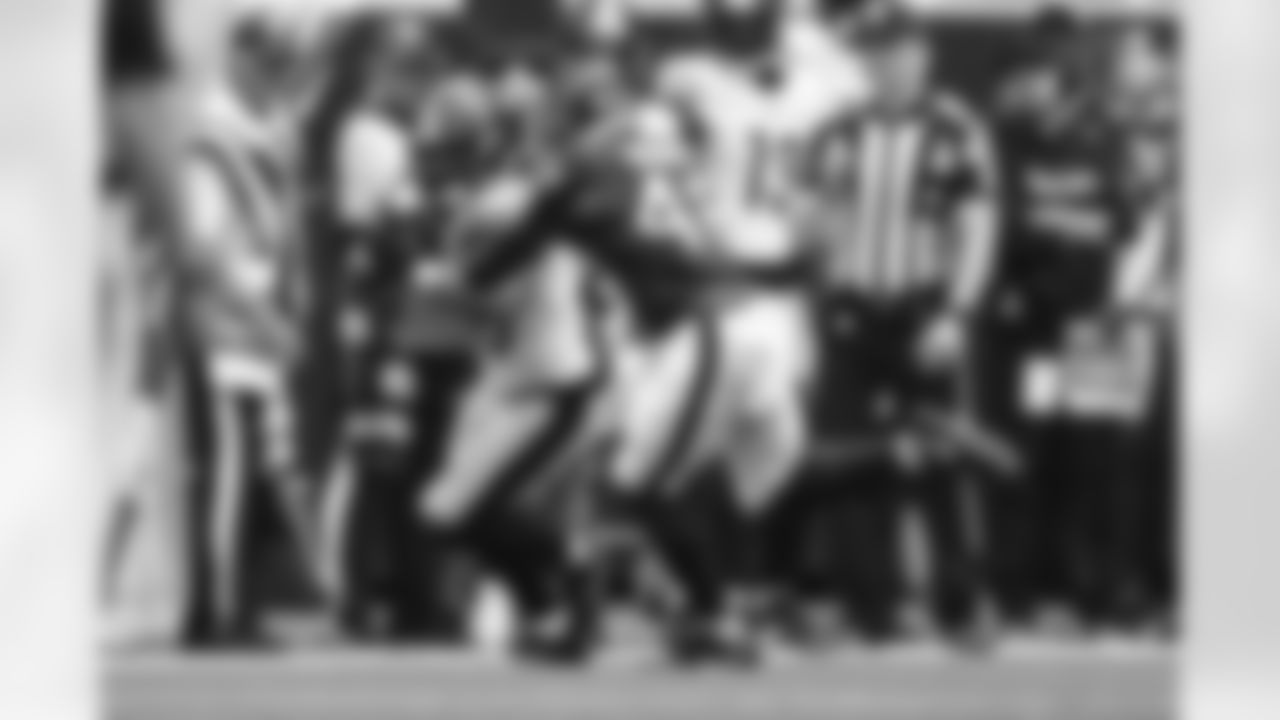
Pittsburgh Steelers running back Jaylen Warren (30) during a regular season game between the Pittsburgh Steelers and the Houston Texans, Sunday, Oct. 1, 2023 in Houston, TX. (Karl Roser / Pittsburgh Steelers)

Pittsburgh Steelers running back Jaylen Warren (30) during a regular season game between the Pittsburgh Steelers and the Houston Texans, Sunday, Oct. 1, 2023 in Houston, TX. (Karl Roser / Pittsburgh Steelers)
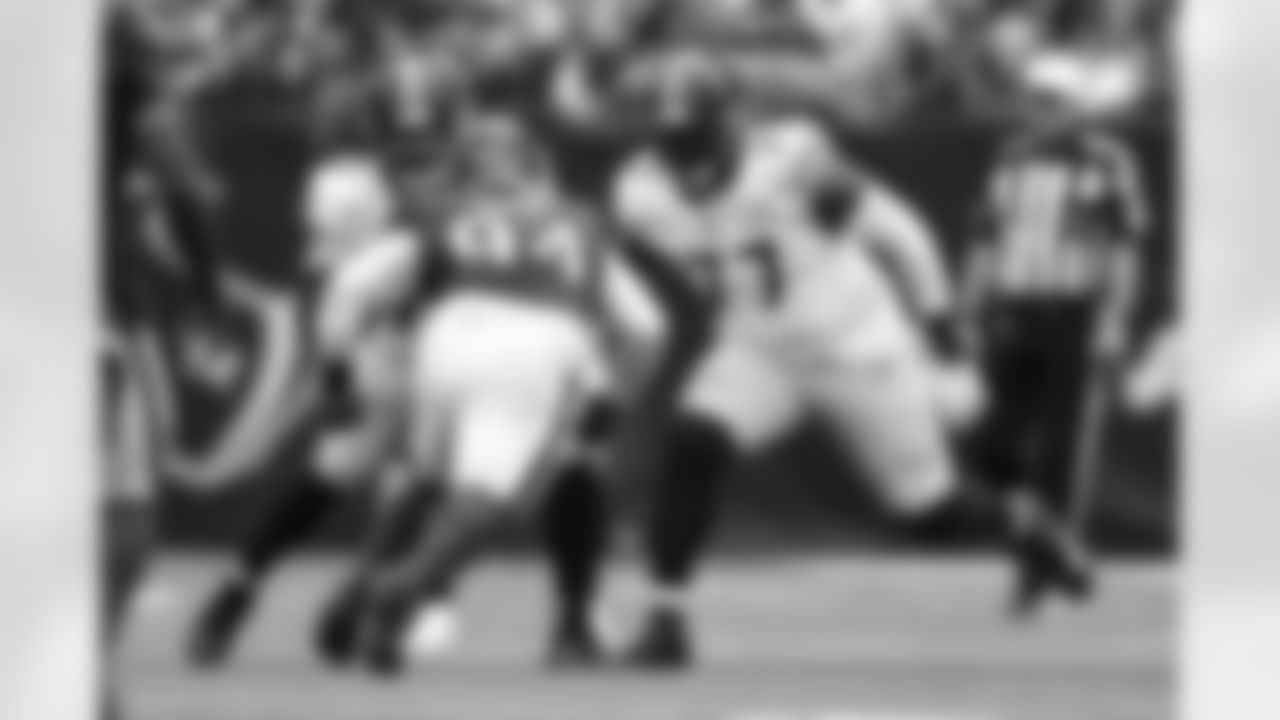
Pittsburgh Steelers guard Isaac Seumalo (73) and Pittsburgh Steelers offensive tackle Broderick Jones (77) during a regular season game between the Pittsburgh Steelers and the Houston Texans, Sunday, Oct. 1, 2023 in Houston, TX. (Karl Roser / Pittsburgh Steelers)
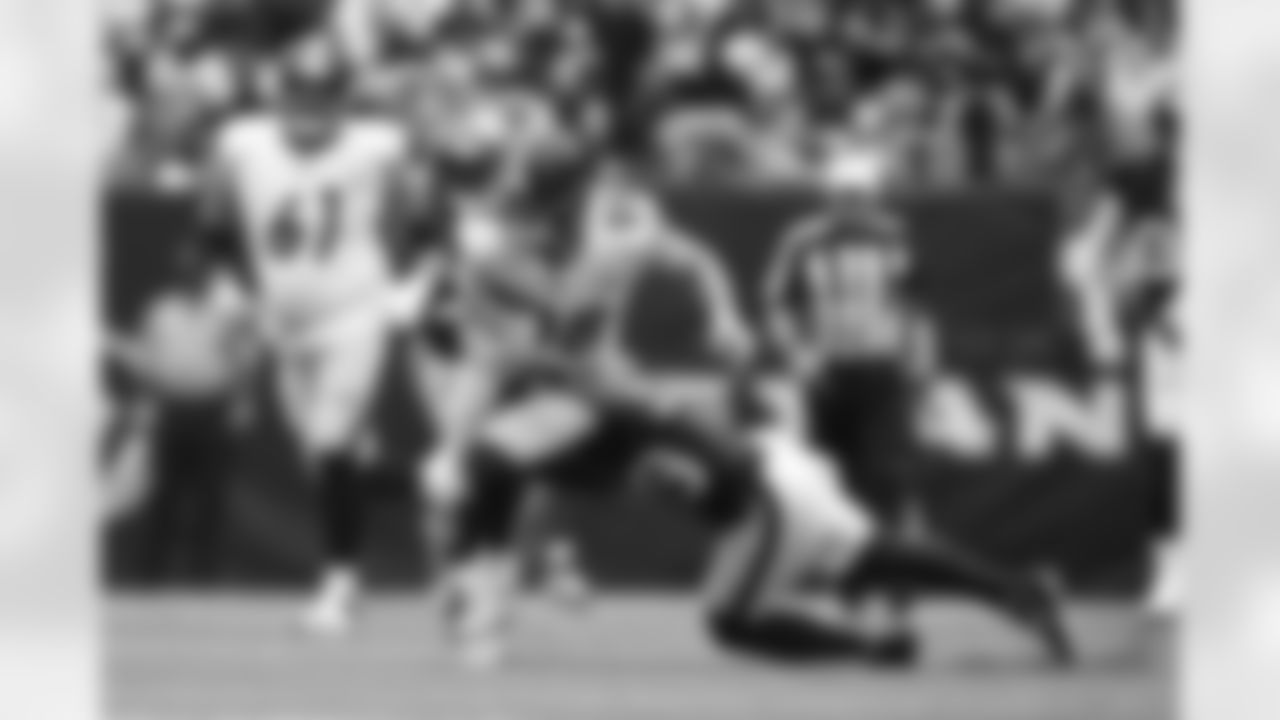
Pittsburgh Steelers tight end Pat Freiermuth (88) during a regular season game between the Pittsburgh Steelers and the Houston Texans, Sunday, Oct. 1, 2023 in Houston, TX. (Karl Roser / Pittsburgh Steelers)

Pittsburgh Steelers wide receiver George Pickens (14) during a regular season game between the Pittsburgh Steelers and the Houston Texans, Sunday, Oct. 1, 2023 in Houston, TX. (Karl Roser / Pittsburgh Steelers)

Pittsburgh Steelers punter Brad Wing (3) and Pittsburgh Steelers kicker Chris Boswell (9) during a regular season game between the Pittsburgh Steelers and the Houston Texans, Sunday, Oct. 1, 2023 in Houston, TX. (Karl Roser / Pittsburgh Steelers)
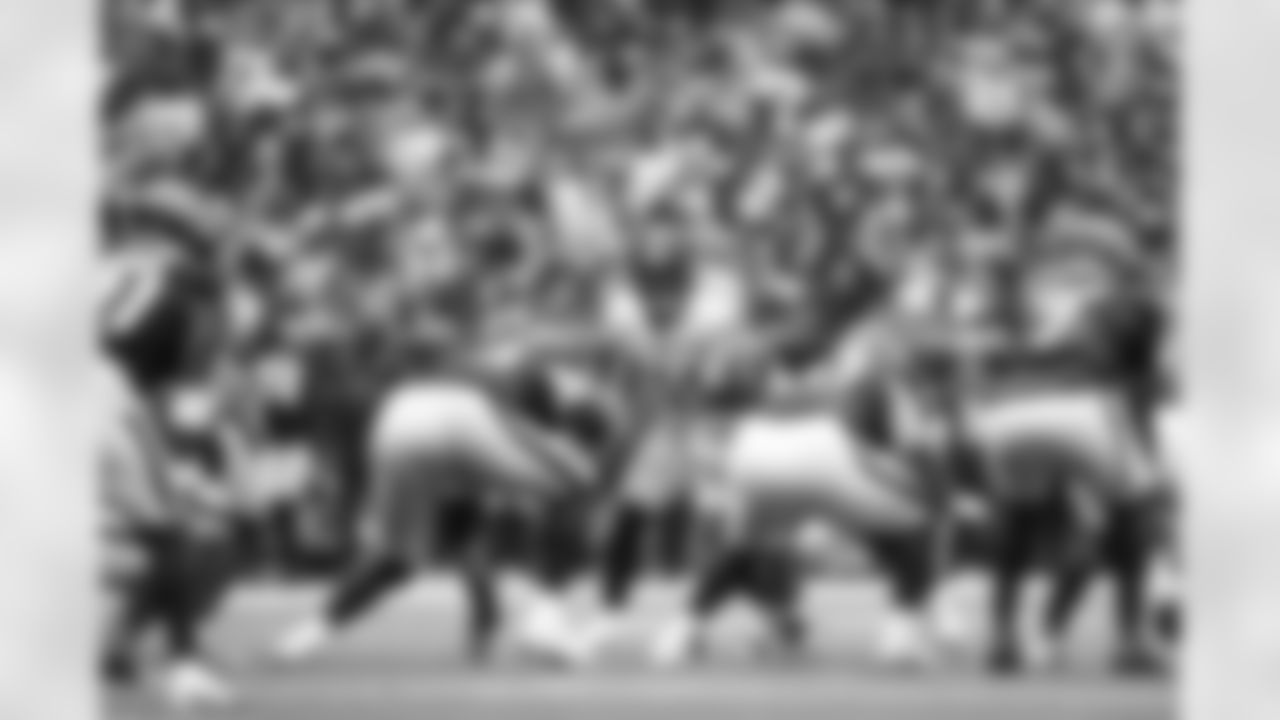
Pittsburgh Steelers linebacker Cole Holcomb (55) during a regular season game between the Pittsburgh Steelers and the Houston Texans, Sunday, Oct. 1, 2023 in Houston, TX. (Karl Roser / Pittsburgh Steelers)
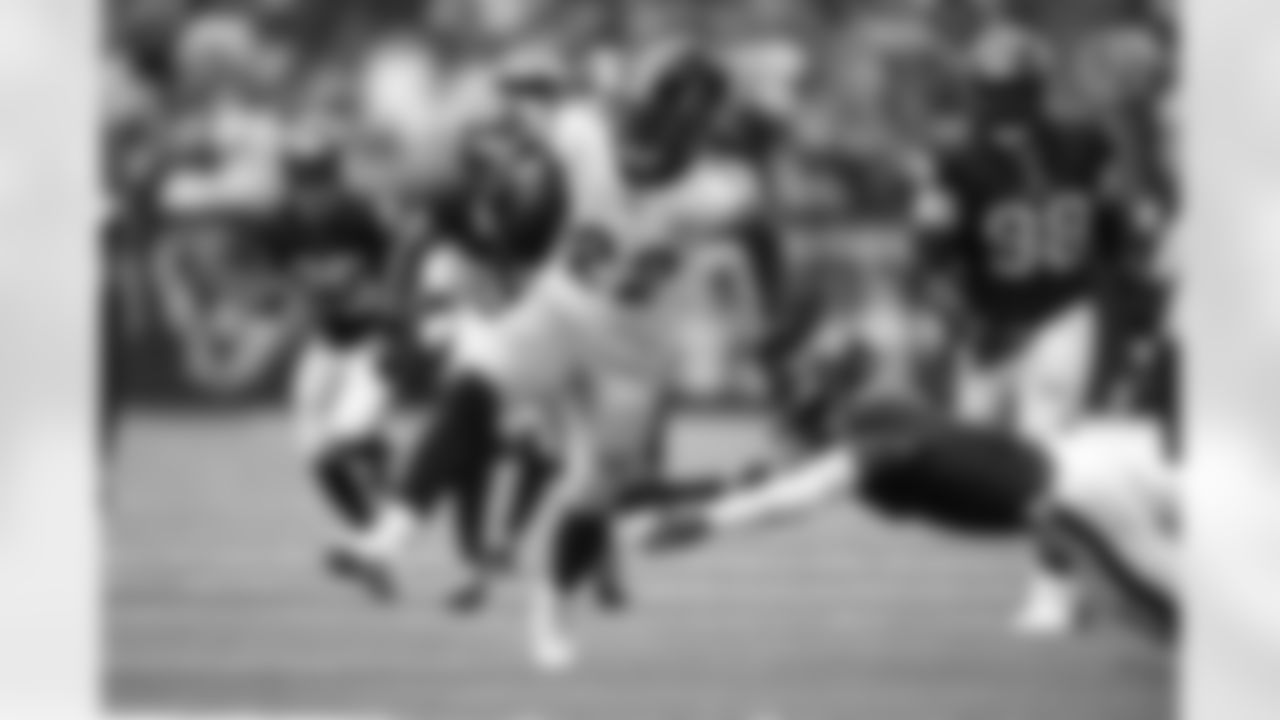
Pittsburgh Steelers running back Najee Harris (22) during a regular season game between the Pittsburgh Steelers and the Houston Texans, Sunday, Oct. 1, 2023 in Houston, TX. (Karl Roser / Pittsburgh Steelers)

Pittsburgh Steelers quarterback Mitch Trubisky (10) during a regular season game between the Pittsburgh Steelers and the Houston Texans, Sunday, Oct. 1, 2023 in Houston, TX. (Karl Roser / Pittsburgh Steelers)
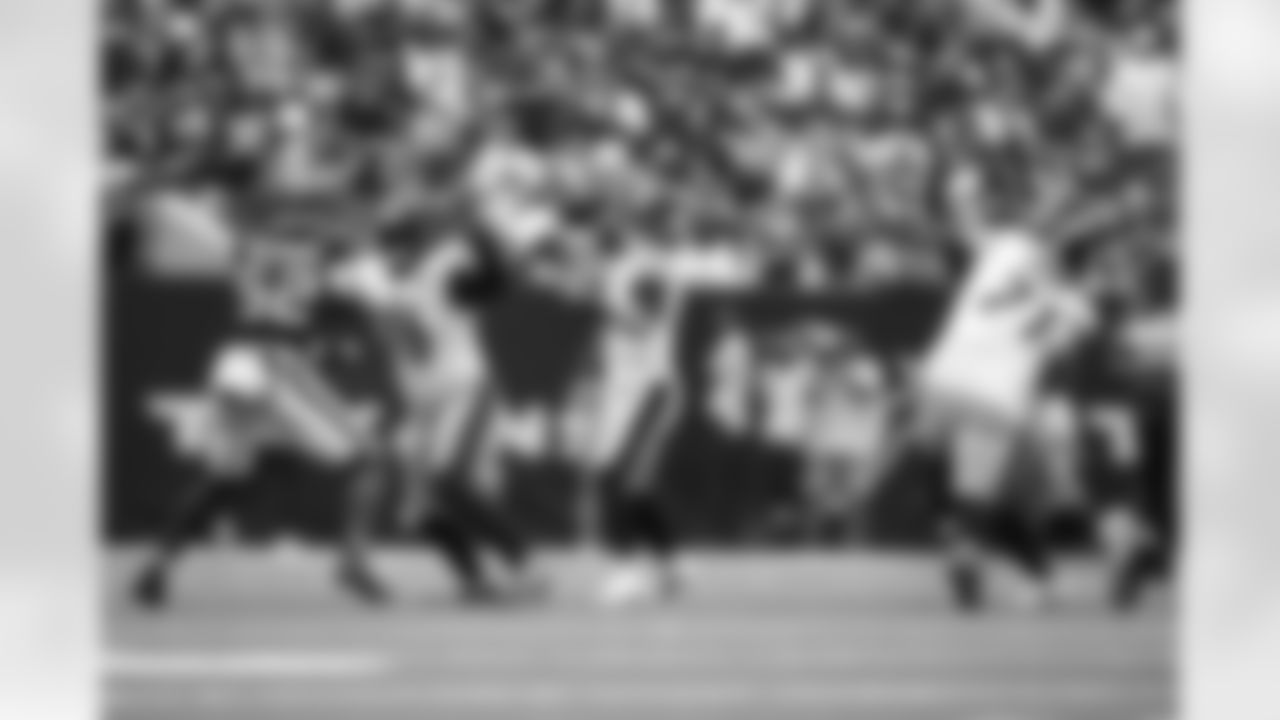
Pittsburgh Steelers quarterback Mitch Trubisky (10) during a regular season game between the Pittsburgh Steelers and the Houston Texans, Sunday, Oct. 1, 2023 in Houston, TX. (Karl Roser / Pittsburgh Steelers)
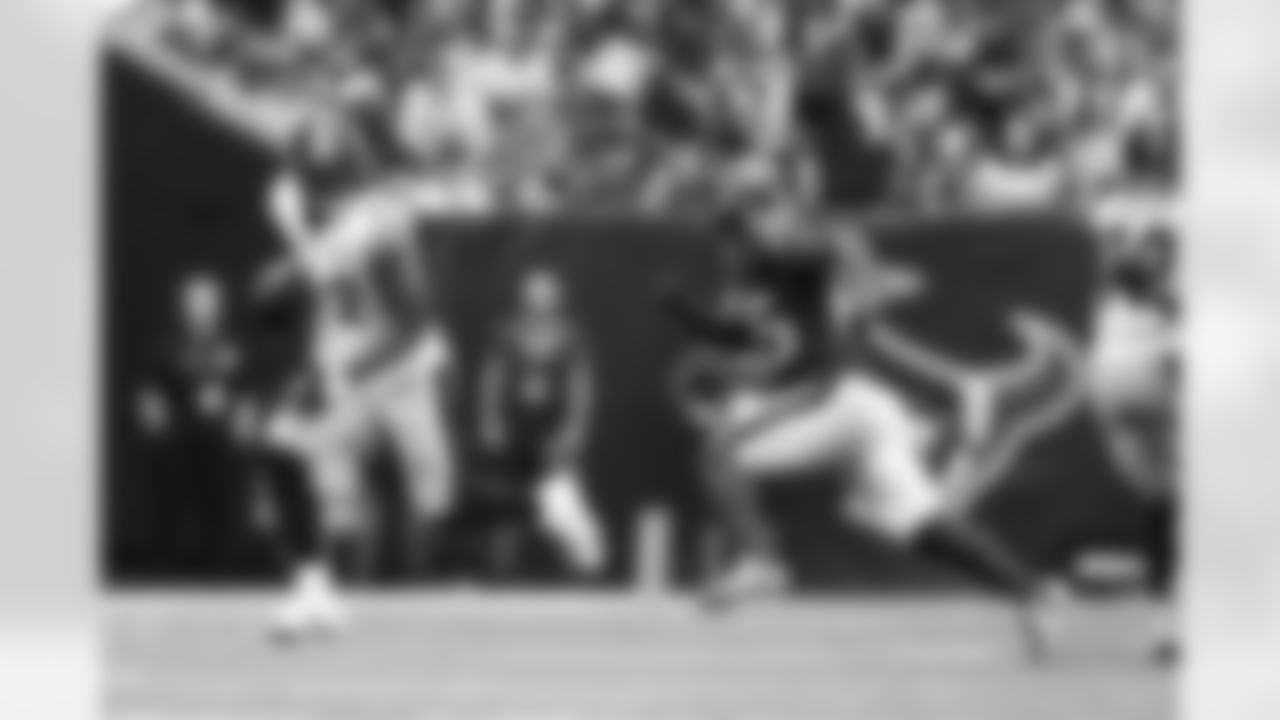
Pittsburgh Steelers running back Najee Harris (22) during a regular season game between the Pittsburgh Steelers and the Houston Texans, Sunday, Oct. 1, 2023 in Houston, TX. (Karl Roser / Pittsburgh Steelers)

Pittsburgh Steelers guard Nate Herbig (71) and Pittsburgh Steelers offensive lineman Mason Cole (61) during a regular season game between the Pittsburgh Steelers and the Houston Texans, Sunday, Oct. 1, 2023 in Houston, TX. (Karl Roser / Pittsburgh Steelers)
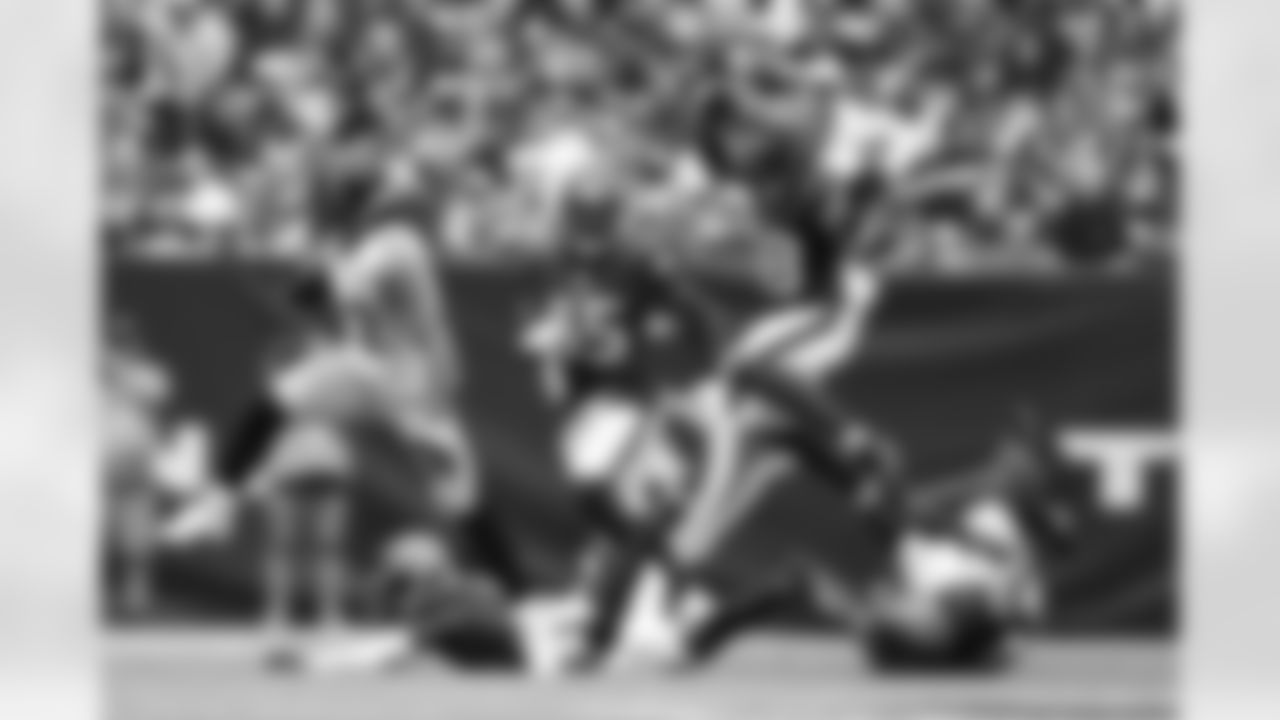
Pittsburgh Steelers running back Najee Harris (22) during a regular season game between the Pittsburgh Steelers and the Houston Texans, Sunday, Oct. 1, 2023 in Houston, TX. (Karl Roser / Pittsburgh Steelers)
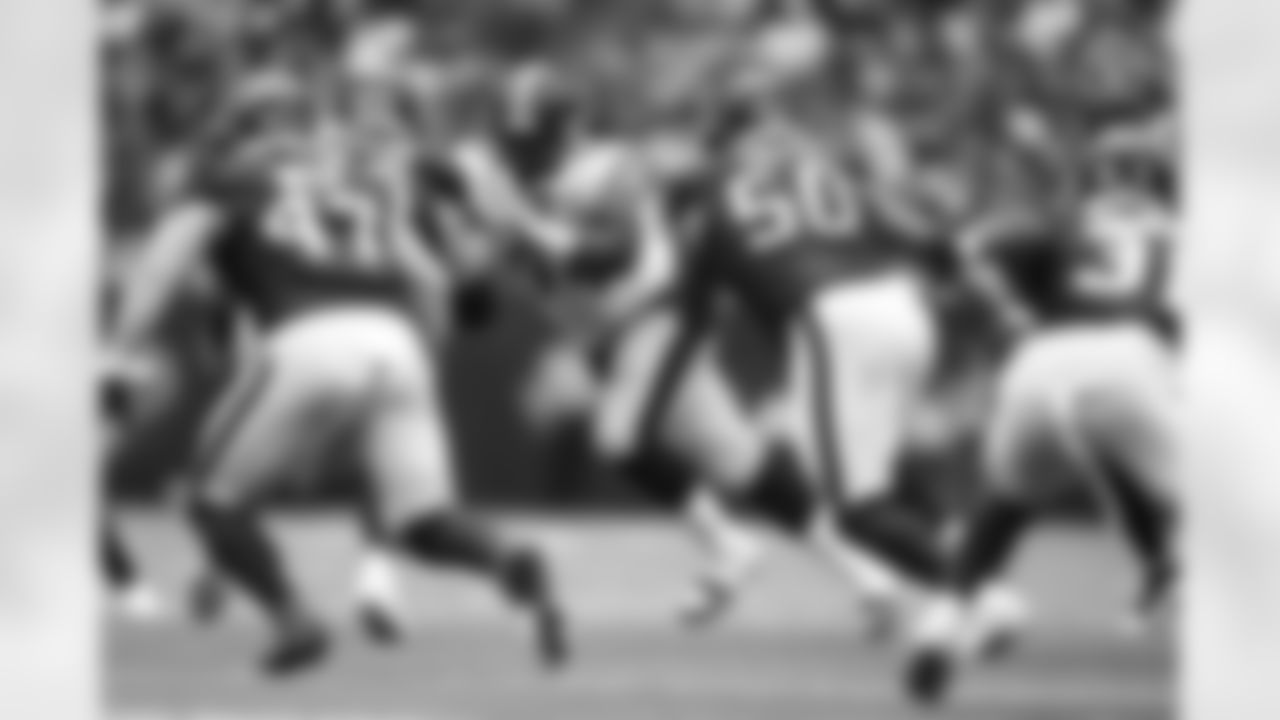
Pittsburgh Steelers defensive tackle Armon Watts (94) during a regular season game between the Pittsburgh Steelers and the Houston Texans, Sunday, Oct. 1, 2023 in Houston, TX. (Karl Roser / Pittsburgh Steelers)
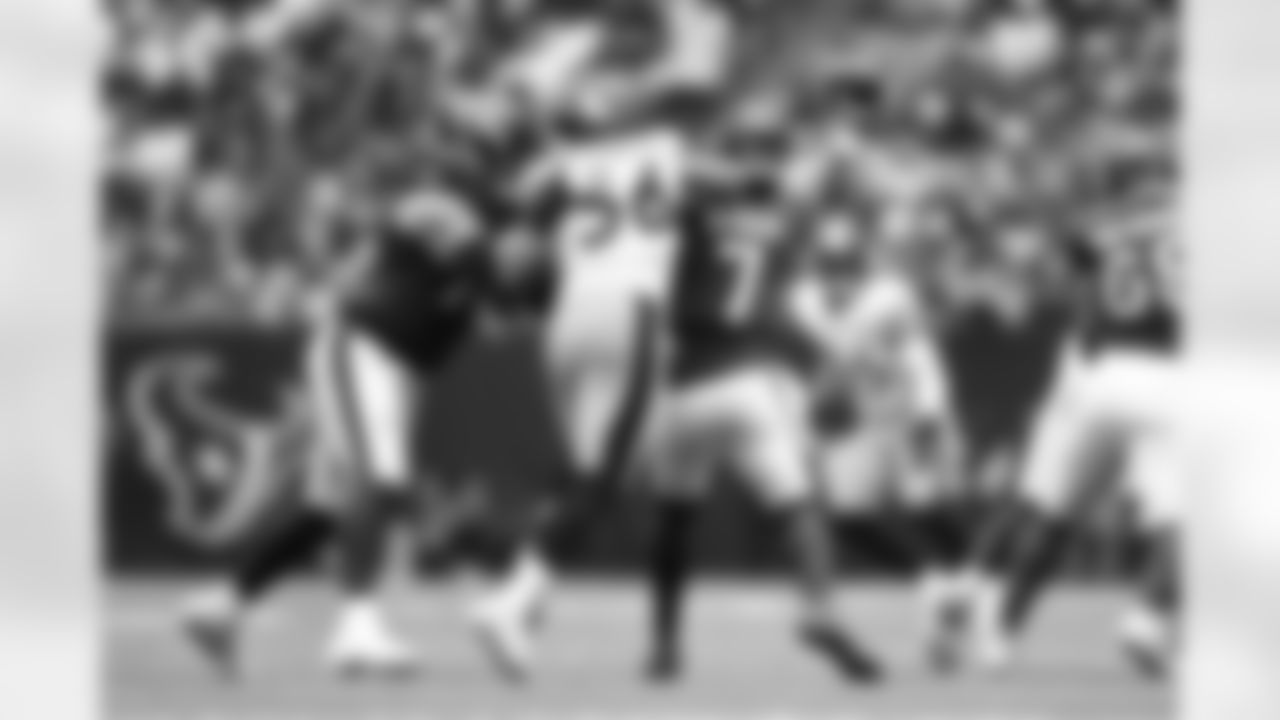
Pittsburgh Steelers linebacker Alex Highsmith (56) during a regular season game between the Pittsburgh Steelers and the Houston Texans, Sunday, Oct. 1, 2023 in Houston, TX. (Karl Roser / Pittsburgh Steelers)

Pittsburgh Steelers linebacker T.J. Watt (90) during a regular season game between the Pittsburgh Steelers and the Houston Texans, Sunday, Oct. 1, 2023 in Houston, TX. (Karl Roser / Pittsburgh Steelers)

Pittsburgh Steelers running back Jaylen Warren (30) during a regular season game between the Pittsburgh Steelers and the Houston Texans, Sunday, Oct. 1, 2023 in Houston, TX. (Karl Roser / Pittsburgh Steelers)
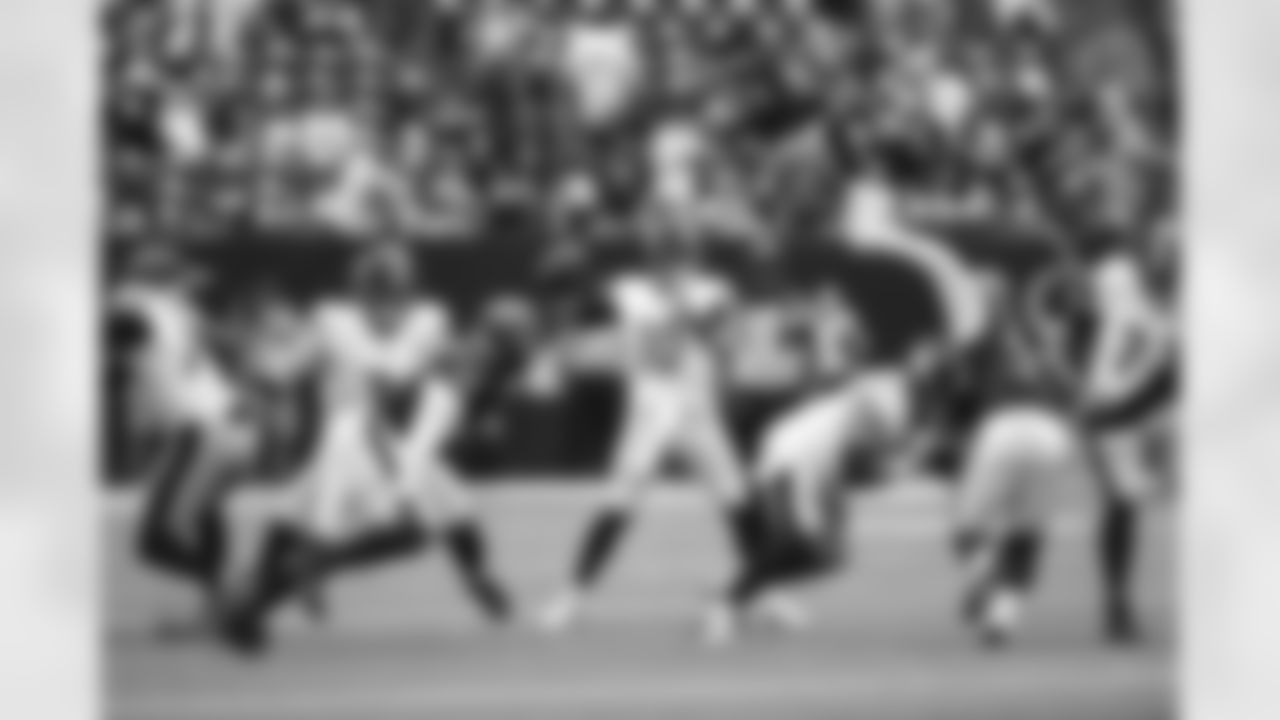
Pittsburgh Steelers quarterback Mitch Trubisky (10) during a regular season game between the Pittsburgh Steelers and the Houston Texans, Sunday, Oct. 1, 2023 in Houston, TX. (Karl Roser / Pittsburgh Steelers)
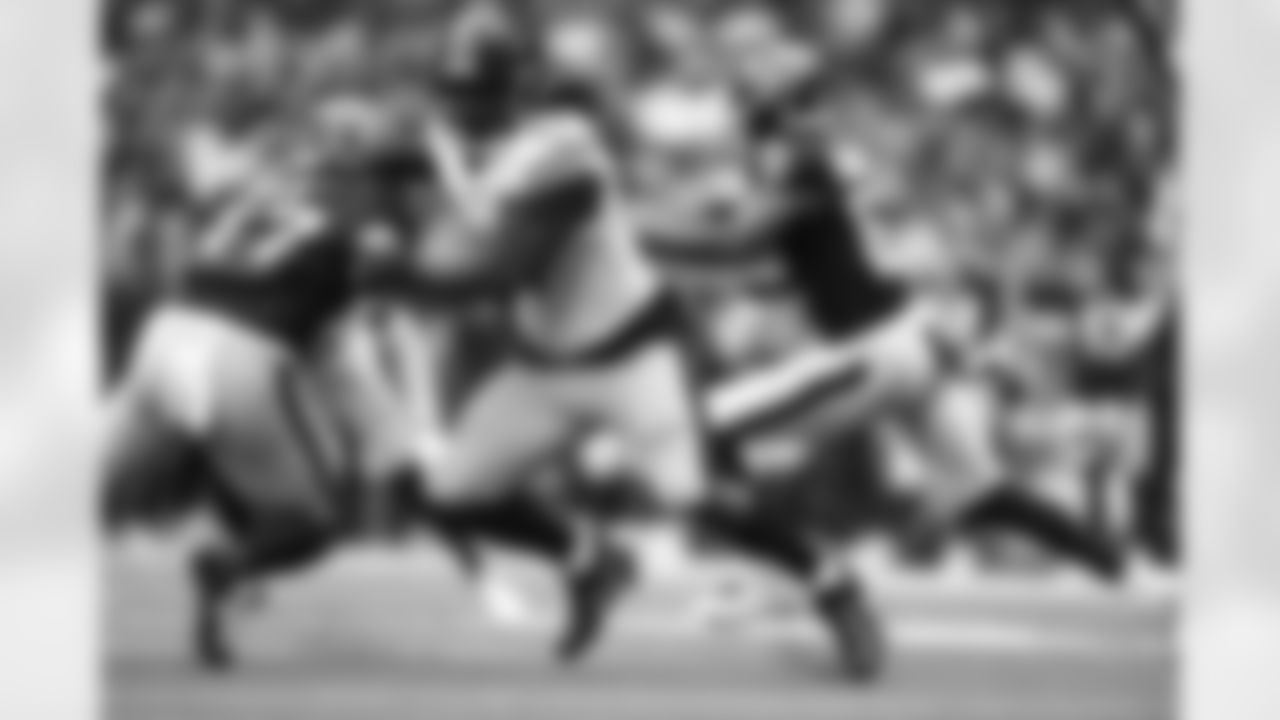
Pittsburgh Steelers linebacker Markus Golden (44) during a regular season game between the Pittsburgh Steelers and the Houston Texans, Sunday, Oct. 1, 2023 in Houston, TX. (Karl Roser / Pittsburgh Steelers)
Nor was it sufficiently physical on a consistent basis. The offensive line was playing without right guard James Daniels, and it would lose Dan Moore Jr. to an in-game knee injury, but the Texans defensive front didn't line up with the pedigree of San Francisco's or Cleveland's, nor did it possess the kind of flamethrower Las Vegas' Maxx Crosby presented. But still there were too many instances of failing to "get a hat on a hat," and even when that happened, the Houston front was consistently, as Texans Coach DeMeco Ryans put it, "Really resetting the line of scrimmage."
And the same kind of thing was happening to the Steelers on the other side of the ball.
The Texans' running attack wasn't dominant in a statistical way (38 attempts for 139 yards, a 3.7 average) as much as it was successful enough to de-fang the Steelers defense enough to help rookie quarterback C.J. Stroud throw for 306 yards and two touchdowns. All of that was happening simultaneously to the Texans defense stifling the Steelers offense, which allowed Stroud to avoid having to take any of the kinds of chances a defense that came into the game leading the NFL in sacks and tied for second in takeaways has turned into plays that change the course of games.
Houston ran 69 offensive plays, and the Steelers defense came out of those with 0 sacks, 0 takeaways, 3 tackles for loss, and four passes defensed. One of the reasons behind the wholesale changes at inside linebacker during the offseason likely had to do with the number of times last year Tomlin found himself talking about "the pile moving forward," which should be considered code for "getting handled physically."
After this loss, Tomlin said, "You don't get (the offense) one-dimensional, you don't get an opportunity for (defensive) splash – the splash that we thrive on – and so it's moot points until we get better at stopping the run, making the pile fall in the correct direction. It's not dramatic, but it's just the direction where the pile was falling."
Certainly, the degree of difficulty varies from one opponent to another, but this was a game against the Texans, a team that hadn't been .500 during the regular season since 2019 and was on its fourth different head coach during the five-season span.
But these 2023 Steelers are a team that cannot afford below-the-line showings by the offense and defense on the same day or it will lose to any opponent on its schedule, quite possibly in definitive fashion. That's what happened on Sunday. On Monday they'll also wake up with an injured starting quarterback adding to their misery.
"Yeah we've got to make some changes," said Tomlin. "That was an ugly product we put out there today, and so we're not going to do the same things and hope for a different outcome. What those changes are, we'll put together a plan in preparation this week."














